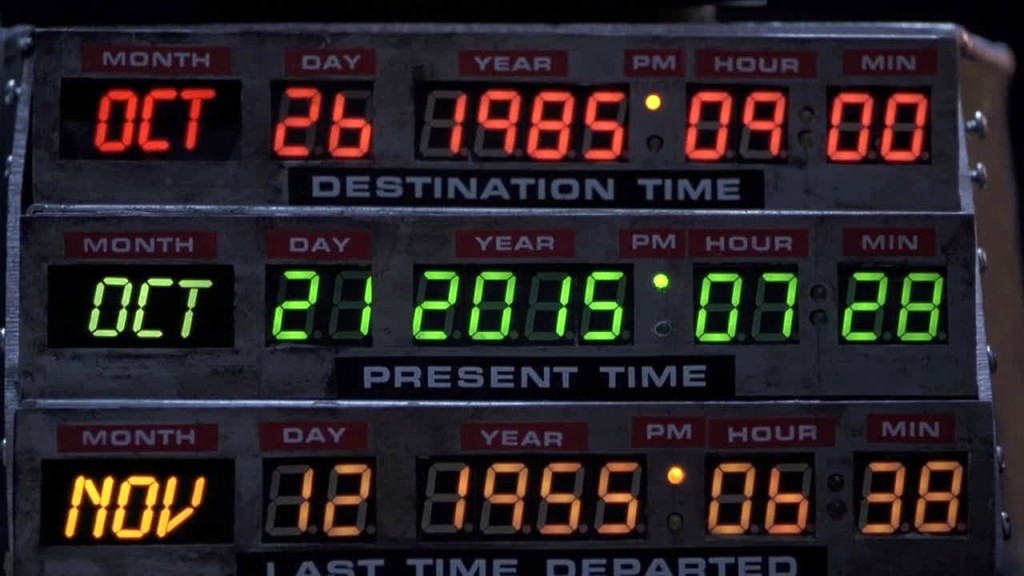Moore’s law is the observation that, over the history of computing hardware, the number of transistors in a dense integrated circuit doubles approximately every 18 months. In simpler terms, it means that technology will improve faster and faster over time.
You didn’t have to know Moore’s law to see how quickly everything has changed and continues to change – just look around you. Smaller phones, faster Internet, bigger curved TV’s – and it’s not just electronics. Improvements in imaging technology allow oil companies to determine whether or not a particular spot is worth drilling. You can order groceries online and have them arrive at your front door within 24 hours. A doctor in New York can review the results of a CAT Scan in California within minutes.
The New Marketing
 And while technology has changed everything, I would argue that nowhere has it made a bigger impact in the bottom line quite like marketing. Traditionally, marketing and advertising were thought of synonymously. You saw the commercial, heard the jingle on the radio, or saw the display in your local store. If customers weren’t buying, the commercial was bad, the jingle wasn’t catchy, or the display wasn’t enticing. If the budget shrank, marketing was the first to get cut because, after all, it wasn’t working to begin with right?
And while technology has changed everything, I would argue that nowhere has it made a bigger impact in the bottom line quite like marketing. Traditionally, marketing and advertising were thought of synonymously. You saw the commercial, heard the jingle on the radio, or saw the display in your local store. If customers weren’t buying, the commercial was bad, the jingle wasn’t catchy, or the display wasn’t enticing. If the budget shrank, marketing was the first to get cut because, after all, it wasn’t working to begin with right?
No longer! Data science and the cliche “big data” have permanently changed the landscape. Companies are able to track how their customers arrived, what they bought, how often they buy, and how much, on average, it costs to acquire a new customer. Organizations of any size and shape can personalize the experience for each shopper. Every marketing decision can be tracked and analyzed and small changes can have a major impact on the company’s growth.
The New Customer
It hasn’t just changed on the business side either – buyers are better informed today.
- 81% of consumers go online before heading out to the store (source: RT)
- Consumers spend an average of 79 days gathering information about a product or service (source: RT)
- Nearly 60 percent of online shoppers consult reviews prior to purchasing consumer electronics (source: Nielsen)
- 40 percent of online shoppers claimed that they would not even buy electronics without seeking reviews about the product online first (source: Nielsen)
If that’s not enough to make you pay attention, consider this:
- 62% of US households that subscribe to a pay-TV service have a DVR and can fast-forward commercials (source: LRG)
- 76% of US households have a DVR, subscribe to Netflix, or use on-Demand (VOD) from a cable or Telco provider (source: LRG)
- Premium music services featuring commercial free music continue to grow, with Spotify now reaching over 15 million active subscribers (source: Spotify)
Your customers now have more ways than ever before to tune you out and ignore your messaging. We record TV shows and fast-forward through commercials, we watch movies on Netflix and Video On-Demand (VOD) interruption free, and we listen to premium commercial-free music stations.
So how do you reach this new generation of informed buyers that are tuning you out?
Marketing Technology: The Bridge
The old adage is true, great marketing can’t fix a bad product, no matter how hard you try. But if you do have a product or service that’s worth the time, marketing technology can help bridge the gap to the customer. Help your customers find you, listen and respond to their needs, and personalize their experience with your organization. Here are 5 things you can do right now to help make these connections.
1. Track Everything
If you’re not collecting data on your customers, you’re flat out missing the boat. Without data, you can only guess, so you need to fix this immediately! There are plenty of free and low cost tools to help you, such as Google Analytics for your website or SuiteCRM for tracking customers. You can always tweak and improve the data you collect over time, but you must have a starting point.
2. Analyze and Measure Everything
As my good friend Ryan Smith recently asked, why aren’t you measuring conversion rates? Once you start acquiring data, you need to actually analyze and measure your data and then make decisions based on those results. Stop guessing, and stop basing decisions on your personal preferences. Your customers will tell you what they want, but you need to actually listen to them.
 Once you have a baseline, it’s time to start making improvements and try new tactics. Let’s say, for example, that 1.8% of everyone that visits your pricing page ends up purchasing from you. Let’s say you also know that there are three particular questions that show up in contact e-mails 60% of the time. If you add this information to your pricing page, does your conversion rate increase, decrease, or stay the same? Without a baseline of where you are, it’s impossible to know where you’re going.
Once you have a baseline, it’s time to start making improvements and try new tactics. Let’s say, for example, that 1.8% of everyone that visits your pricing page ends up purchasing from you. Let’s say you also know that there are three particular questions that show up in contact e-mails 60% of the time. If you add this information to your pricing page, does your conversion rate increase, decrease, or stay the same? Without a baseline of where you are, it’s impossible to know where you’re going.
Again, there are plenty of free tools that can help you measure and analyze your data. If you don’t know how to use these tools, there are plenty of free resources available online, such as Google Analytics Academy. Also, check back at araxam.com often, as we are constantly adding new resources to help you.
3. Test Everything
You’ve just redesigned your site and you spent hours writing and rewriting the copy for your product pages. You’re certain it’s perfect, so you launch the site and forget about, right?
Wrong! Refer to items 1 and 2 above. Record data and establish a baseline. Then, create some new copy, new graphics, or a new call-to-action, and run an A/B test. Let your users’ behavior tell you what content is working. If variation A converts at 2.2% while variation B converts at 1.7%, the content on variation A is connecting with your customers better. As long as the data is based on a reasonable sampling of your users, listen to what they’re telling you and use the content that works. Once you remove variation B, are you finished?
Are you paying attention? Create another variation and test again. Test something different – the form, the colors, the logo. Test, test, and test again – your users will tell you what is working.
4. Personalize the Customer Experience
Your customers shop in a variety of ways – in person, on their computer, on a mobile device or tablet, etc. Are you customizing the experience for them or are you trying to cram everyone down the same path?
If you’re running a website, you need to embrace responsive design (or similar technology) so that the user experiences your site as if it was designed for them. According to a survey by Google, 48% of users said that if a site didn’t work well on their smartphone, it made them feel like the company didn’t care about their business. And in case you’re wondering, Millennials live in the mobile space.
Are you sending a generic e-mail after someone completes a form or are you personalizing the e-mail for them? According to an Aberdeen study, personalized e-mails improve click-through rates by 14% and conversion rates by 10%.
Speak to your customers, not at them. If you make the experience about your customers, they’ll respond favorably and your company will reap the benefits.
5. Engage With Your Customers
Your customers are talking. Are they talking to you? About you? About your competitors? Do you know?
Social media sites are successful because they provide a platform that allow people to engage with one another. And they engage on a variety of subjects – including things like which is the better brand and who has the better product. Jay Baer, author of the book Youtility, tells a story about Hilton hotels that highlights the importance of engagement nicely.
While staying at the Magnolia Hotel in downtown Dallas, @LTHouston sends out a tweet asking if there are any good restaurants nearby.
@Hiltonsuggests replies and recommends two restaurants within walking distance.
In case you were wondering, the Magnolia Hotel isn’t a Hilton property.
Who do you think @LTHouston will think of the next time he has to book travel? The companies that pay attention are winning.
It’s not just social media organizations need to monitor. Review sites, such as Yelp!, Google Reviews, and Amazon, also play a major role in decision making. According to a survey by Dimensional Research, an overwhelming 90 percent of respondents who recalled reading online reviews claimed that positive online reviews influenced buying decisions, while 86 percent said buying decisions were influenced by negative online reviews. Do you know what your customers are saying about you?
Marketing Technology is the Tool, You Still Need to Wield It
Improvements in the marketing technology landscape offer a lot of promise for the future. Organizations now have the ability to do much more with much less. While big budgets still help, individuals and small-businesses that embrace this technology can compete with the big dogs, something that wasn’t possible previously.
But after all, this is the future…
What do you think about the growth in marketing technology? Tell me in the comments:


